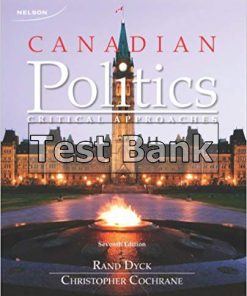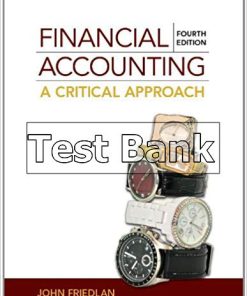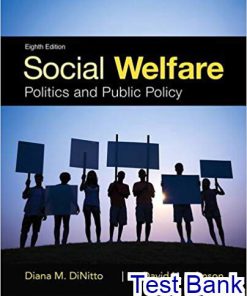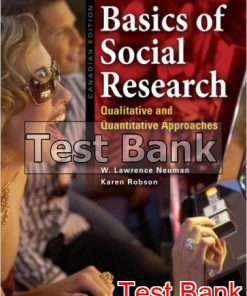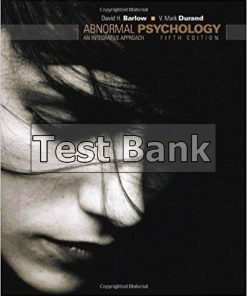Canadian Politics Critical Approaches 8th Edition Dyck Test Bank
$26.50$50.00 (-47%)
Canadian Politics Critical Approaches 8th Edition Dyck Test Bank.
You may also like
This is completed downloadable of Canadian Politics Critical Approaches 8th Edition Dyck Test Bank
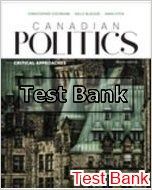
Product Details:
- ISBN-10 : 0176582959
- ISBN-13 : 978-0176582951
- Author: Christopher Cochrane
For over 30 years, Canadian Politics: Critical Approaches has engaged students in the history and debates of the Canadian political environment. The country has changed a great deal over these past decades; however, Canada’s political institutions have not. The relative stability of political institutions in the face of rapidly changing social, economic, and international environments is an enduring theme of Canadian politics. With the most recent election, the federal government laid out an ambitious agenda of political reform. Among other changes, the new government has pledged to reform the House of Commons, the senate, and the way votes are counted and seats are allocated in elections. This text provides readers with the tools and background knowledge to help them think seriously and critically about these and many other questions that Canada now faces. This text places its major focus between the two parts of the Canadian political system: its “environment” and its institutions. Students will be deeply engaged in the clash of interests from which Canadian political activity has stemmed, and will be equally fascinated by topics related to political culture, the mass media, public opinion, elections, and advocacy groups that will introduce them to the vibrant and dynamic world of Canadian politics. This new eighth edition of Canadian Politics: Critical Approaches seeks to make informed critics of its readers by presenting the relevant, challenging concepts of Canada’s political system with a balanced and engaging account of both political institutions and social influencers.
Table of Content:
- Part 1: Introduction
- Chapter 1: Approaching the Study of Politics
- The Political System
- Approaches To The Study Of Politics
- Institutional Approaches
- State-Based Approaches
- Political Sociology Approaches
- Political Psychology and Political Behaviour Approaches
- The Rational Choice Approach
- Conclusion
- Discussion Questions
- Notes
- Further Reading
- Chapter 2: Institutional Foundations and the Evolution of the State
- Early Institutional Developments
- The Road To Confederation
- The British Parliamentary System Compared With The American Congressional System
- Canadian And American Federalism
- The Road To Canadian Sovereignty
- Principles Of The Canadian Constitution
- Conclusion
- Discussion Questions
- Notes
- Further Reading
- Part 2: The Societal Context Cleavages and Identities
- Chapter 3: Regionalism
- Theoretical Considerations
- Geography
- Physiographic Regions
- Transportation and Communications Systems
- Population Distribution
- Economy
- The Atlantic Region
- Quebec
- Ontario
- The Prairie Region
- British Columbia
- The North
- Historic Regional Conflicts
- Ownership of Natural Resources
- Tariffs
- Transportation
- Banking
- The Atlantic Provinces
- Recent Regional Conflicts
- Taxation and Regulation of Natural Resources
- Other Regional Economic Conflicts
- Regional Economic Disparities
- Regional Identities
- Conclusion
- Discussion Questions
- Notes
- Further Reading
- Chapter 4: Aboriginal Peoples
- Aboriginal Demographic Profile Today
- Historical Evolution
- Setting The Stage For Change
- From The White Paper To The Charlottetown Accord
- Early Land Claims
- The Constitution Act, 1982 and the Meech Lake Accord
- Land Issues in 1990
- The Charlottetown Accord, 1992
- Aboriginal Issues In The ChrÉtien Era, 1993-2003
- Aboriginal Self-Government
- Ipperwash, Caledonia, and Aboriginal Injustice
- Nunavut and the Nisga’a Treaty
- Contemporary Aboriginal Issues
- Political Activity
- “On-Reserve” and “Off-Reserve”Aboriginal Peoples
- The Kelowna Accord and Court Cases
- The Harper Government
- Theoretical Considerations
- Conclusion
- Discussion Questions
- Notes
- Further Reading
- Chapter 5: French Canada and the Quebec Question
- The French–English Demographic Profile Today
- Different Conceptions Of French Canada
- Historical Overview Of French–English Relations
- Pre-Confederation Developments
- Ethnic/Linguistic Conflicts, 1867–1960
- Pre-1960 Quebec Nationalism
- The Quiet Revolution: Quebec In The 1960s
- Quebec And French Canada Since 1970
- The 1970s
- The 1980s
- The 1990s
- Party Support in Quebec
- Developments in Other Provinces and Territories
- Contemporary Issues
- Conclusion
- Discussion Questions
- Notes
- Further Reading
- Chapter 6: Ethnocultural Minorities
- A Profile Of Ethnocultural Minorities Today
- Theoretical Considerations
- History Of Canadian Immigration
- Racial Discrimination
- Overcoming Discrimination: Multiculturalism, Equity, And Inclusiveness
- Current Ethnocultural Issues
- Conclusion
- Discussion Questions
- Notes
- Further Reading
- Chapter 7: Gender
- Theoretical Considerations
- Evolution Of Women’s Rights To 1970
- The Women’s Movement After 1970
- Representation in Politics and Government
- Employment Issues
- Constitutional, Legal, and Aboriginal Women’s Issues
- Reproduction, Sexuality, Health, and Violence Issues
- The Feminization of Poverty and Child Care
- Women’s Centres and Women’s Groups
- Contemporary Issues
- Gay, Lesbian, And Transgender Issues And Identities
- Conclusion
- Discussion Questions
- Notes
- Further Reading
- Chapter 8: Class
- Theoretical Considerations
- A Profile Of Class Divisions In Canada Today
- The Upper Class
- Identifying the Corporate Elite
- Demands of the Corporate Elite and Results
- The Middle Class
- The Working Class
- The Poor
- The Rise And Decline Of The Social Safety Net
- The Rise
- The Decline
- Conclusion
- Discussion Questions
- Notes
- Further Reading
- Chapter 9: Urban/Rural Location, Religion, and Age
- Theoretical Considerations
- Urban/Rural Location
- Religion
- Separate Schools
- Other Religious Issues
- Current Religious Issues
- Age
- Earlier Struggles
- Population Projections
- Future Issues
- Conclusion
- Discussion Questions
- Notes
- Further Reading
- Chapter 10: Canada’s External Environment: The United States and the World
- The Global Setting
- Foreign Governments
- International Organizations
- International Agreements
- Transnational Corporations and Globalization
- International Terrorism
- U.S. Influences In Defence, Foreign, And Border Policies
- Canadian Defence Policy
- Canadian Foreign Policy
- Canadian Border Policy
- U.S. Economic Influences On Canada
- Foreign Investment
- Trade
- The Canada–U.S. Free Trade Agreement
- North American Free Trade Agreement
- Other Trade Issues
- The Environment
- Energy
- Trade Unions
- The Canadian Economy in an Age of Globalization
- U.S. Influences On Canadian Culture
- Television
- Magazines
- Film and Video
- Publishing
- Newspapers, Radio, and Sound Recordings
- Other Cultural Industries
- Canadian Cultural Industries in an Age of Globalization
- U.S. Influences On Other Aspects Of Canadian Life
- Conclusion
- Discussion Questions
- Notes
- Further Reading
- Part 3: Linking People to Government
- Chapter 11: The Canadian Political Culture
- Theoretical Considerations
- Democracy
- Popular Sovereignty
- Political Equality
- Political Freedom
- Majority Rule and Minority Rights
- Distinguishing Between Canadian And American Values
- Balance Between Individualism and Collectivism
- Particularism, Diversity, and Tolerance
- Deference to Authority
- Egalitarianism
- Caution, Diffidence, Dependence, Idealism, and Nonviolence
- Other Statements of Basic Values
- Is Canada’s Political Culture Changing?
- “Limited Identities”: Subcultures In Canada
- Regional and Provincial/Territorial Subcultures
- Ethnic Subcultures
- Class Subcultures
- Conclusion
- Discussion Questions
- Notes
- Further Reading
- Chapter 12: Political Socialization, the Mass Media, and Public Opinion Polls
- Theoretical Considerations
- Political Socialization
- The Family
- The School
- Peers
- Other Agents of Political Socialization
- The Mass Media
- Media Ownership and Control in Canada
- The Changing Media World
- The Internet
- The Media and the Public
- The Media and the Politicians
- Public Opinion Polls
- Measuring Public Opinion
- The Importance of Polls in Elections
- Impact of Polls on the Authorities
- Conclusion
- Discussion Questions
- Notes
- Further Reading
- Chapter 13: Elections and the Electoral System
- Theoretical Considerations
- Drawing The Electoral Map
- Distribution of Seats among Provinces
- Drawing Constituency Boundaries
- The Official Election Machinery
- Setting the Date
- Election Officials
- The Voters’ List
- Nomination
- Election Day
- The Ballot
- The Franchise
- Controversies during the 2011 and 2015 Elections
- The Proportionality Of The Electoral System
- Discrepancies between Seats and Votes: National Level
- Discrepancies between Seats and Votes: By Province
- Remedies
- Financing Elections
- Pre-1974
- Federal Election Finance Law and Its Results, 1974–2003
- Federal Election Finance Law after 2003
- Third-Party Advertising and the Royal Commission on Electoral Reform and Party Financing
- Conclusion
- Discussion Questions
- Notes
- Further Reading
- Chapter 14: Political Parties and the Party System
- Theoretical Considerations
- Historical Evolution Of Canadian Parties
- The First Party System, 1867–1921
- The Second Party System, 1921–1957
- The Third Party System, 1957–1993
- The Fourth Party System, 1993–2015
- Interpretations Of The Canadian Party System
- The Broker System
- Ideological or Class-Based Parties
- Party Ideology
- Party Organization
- Party Membership
- Party Leadership
- Party Policymaking
- General Structures and Operations
- Conclusion
- Discussion Questions
- Notes
- Further Reading
- Chapter 15: The Election Campaign, Voting, and Political Participation
- The National Party Campaign
- Party Headquarters and Pre-Writ Preparations
- Election Strategy
- The Election Platform
- The Leader’s Tour
- Media Coverage
- National Media Advertising
- Political Marketing
- The Leaders’ Debates
- The 2015 Election Campaign
- The Local Candidate Campaign
- Nomination
- The Local Campaign
- The Voter Choice
- Sociodemographic Bases of Party Support
- Core Values and Beliefs
- Party Identification
- The Issues, the Economy, and the Government’s Performance
- Leadership
- Strategic Voting
- Political Participation
- Electoral Participation
- Non-electoral Participation
- Conclusion
- Discussion Questions
- Notes
- Further Reading
- Chapter 16: Advocacy Groups, Social Movements, and Lobbying
- Theoretical Considerations
- The Array Of Canadian Advocacy Groups
- Business Groups
- Nonbusiness Groups
- Other Categorizations of Advocacy Groups
- Social Movements
- Advocacy Group Structures
- Targets And Methods Of Advocacy Group Activity
- Policy Communities and Policy Networks
- The Bureaucracy
- The Prime Minister, the Cabinet, and Ministers
- Parliament
- Other Targets
- Group Resources And Determinants Of Success
- Lobbying In Canada
- Emergence of Modern Lobbying
- Legalizing Lobbying: The Registration System
- Lobbying under the Chrétien, Martin,and Harper Governments
- Conclusion
- Discussion Questions
- Notes
- Further Reading
- Part 4: The Consitutional Context
- Chapter 17: The Canadian Constitution and Constitutional Change
- Components Of The Canadian Constitution
- The Constitution Act, 1867
- Amendments to the Constitution Act, 1867
- British Statutes and Orders in Council
- Organic Canadian Statutes
- Constitution Act, 1982
- Judicial Decisions
- Constitutional Conventions
- The Pre-1960 Quest For Contitutional Change
- A Domestic Constitutional Amending Formula
- A Constitutional Charter of Rights
- Mega-Constitutional Change, 1960–2000
- The Victoria Charter
- The Constitution Act, 1982
- The Meech Lake Accord
- The Charlottetown Accord
- The 1992 Referendum
- Post-Charlottetown Constitutional Developments
- Single-Issue Constitutional Change
- Post-1982 Formal Constitutional Amendments
- Constitutional Change relating to Aboriginal Canadians
- Instruments of Constitutional Change otherthan Formal Amendments
- Conclusion
- Discussion Questions
- Notes
- Further Reading
- Chapter 18: The Federal System
- The Confederation Settlement
- Evolution Of Canadian Federalism To 2000
- Division of Powers
- Federal–Provincial Finance
- Federal Controls
- Phases Of Canadian Federalism
- Canadian Federalism, 1867–1945
- Canadian Federalism, 1945–2000
- Canadian Federalism in the 21st Century
- Conclusion
- Discussion Questions
- Notes
- Further Reading
- Chapter 19: The Charter of Rights and Freedoms
- Defining And Protecting Rights And Freedoms
- En Route To The Charter
- The Charter Of Rights And Freedoms
- The Reasonable Limits Clause
- Fundamental Freedoms
- Democratic Rights
- Mobility Rights
- Legal Rights
- Equality Rights
- Official Languages of Canada
- Minority-Language Education Rights
- Other Provisions
- Application Of The Charter
- The Notwithstanding Clause
- Implications Of Constitutionalizing The Charter Of Rights
- Criticism from Right and Left
- Dialogue between Legislatures and Courts
- Conclusion
- Discussion Questions
- Notes
- Further Reading
- Part 5: Governing
- Chapter 20: The Policymaking Process and Policy Instruments
- The Changing Role Of The State
- The Policymaking Process
- Initiation
- Priority Setting
- Policy Formulation
- Legitimation
- Implementation
- Interpretation
- Policy Communities Revisited
- Policy Instruments
- Privatization
- Symbolic Response
- Exhortation
- Tax Expenditures
- Public Expenditures
- Regulation
- Taxation
- Public Ownership
- State of Emergency
- The Environment As A Case Study
- Conclusion
- Discussion Questions
- Notes
- Further Reading
- Chapter 21: The Executive: Crown, Prime Minister, and Cabinet
- The Crown
- The Governor General
- Powers of the Crown
- Other Functions of the Crown
- Advantages and Disadvantages of the Monarchy
- The Prime Minister And Cabinet
- Powers of the Prime Minister and Cabinet
- The Prime Minister
- Prime Ministerial Tenure And Style
- Composition of the Cabinet
- Operation of the Cabinet
- Central Agencies
- Conclusion
- Discussion Questions
- Notes
- Further Reading
- Chapter 22: The Bureaucracy
- Functions And Powers Of The Bureaucracy
- Government Departments
- Number, Structure, and Size
- Responsibility and Accountability at the Top of the Department
- Exempt Staff
- The Rest of the Department
- Relations with Other Departments and Central Agencies
- The Merit Principle and a Representative Bureaucracy
- The Estimates System
- Departmental Interaction with Provinces and the Public
- Crown Corporations
- Administrative Agencies
- Controlling The Bureaucracy
- Prime Minister, Ministers, and Cabinet
- Bureaucrats Controlling Bureaucrats
- House of Commons
- The Judiciary
- Watchdog Agencies
- Bureaucratic Accountability
- Conclusion
- Discussion Questions
- Notes
- Further Reading
- Chapter 23: Parliament
- Functions And Powers Of The House Of Commons
- Composition Of The House Of Commons
- The Parliamentary Timetable
- The Typical Session
- The Typical Week
- Party Discipline
- Caucus Meetings
- Stages And Kinds Of Legislation
- Organization And Officers Of The Commons
- The Speaker
- House Leaders, Party Whips, and Clerk
- Voting
- Speeches
- The Committee System
- Members’ Services And Ethics
- Roles Of Members Of Parliament
- The Government–Opposition Balance
- Minority Government
- Reform Of The House Of Commons
- Purposes And Powers Of The Senate
- Composition Of The Senate
- Operation Of The Senate
- Senate Reform
- The Harper Proposals
- Conclusion
- Discussion Questions
- Notes
- Further Reading
- Chapter 24: The Judiciary
- The Function Of Adjudication
- Access to and Costs of Justice
- Categories Of Laws
- Structure Of The Courts
- Provincial and Territorial Courts of Appeal
- The Federal Court of Canada
- The Supreme Court Of Canada
- The Appointment Of Judges
- Retirement, Removal, And Independence Of Judges
- Conclusion
- Discussion Questions
- Notes
- Further Reading
- Appendix A: Constitution Act, 1867 (excerpts)
- Appendix B Constitution Act, 1982, Schedule B
- Glossary
- Index
People Also Search:
canadian politics critical approaches dyck
canadian politics critical approaches 8th edition dyck
canadian politics critical approaches
canadian politics critical approaches 8th edition
canadian politics critical approaches 8th edition testbank download pdf
canadian politics critical approaches 8th edition download scribd

